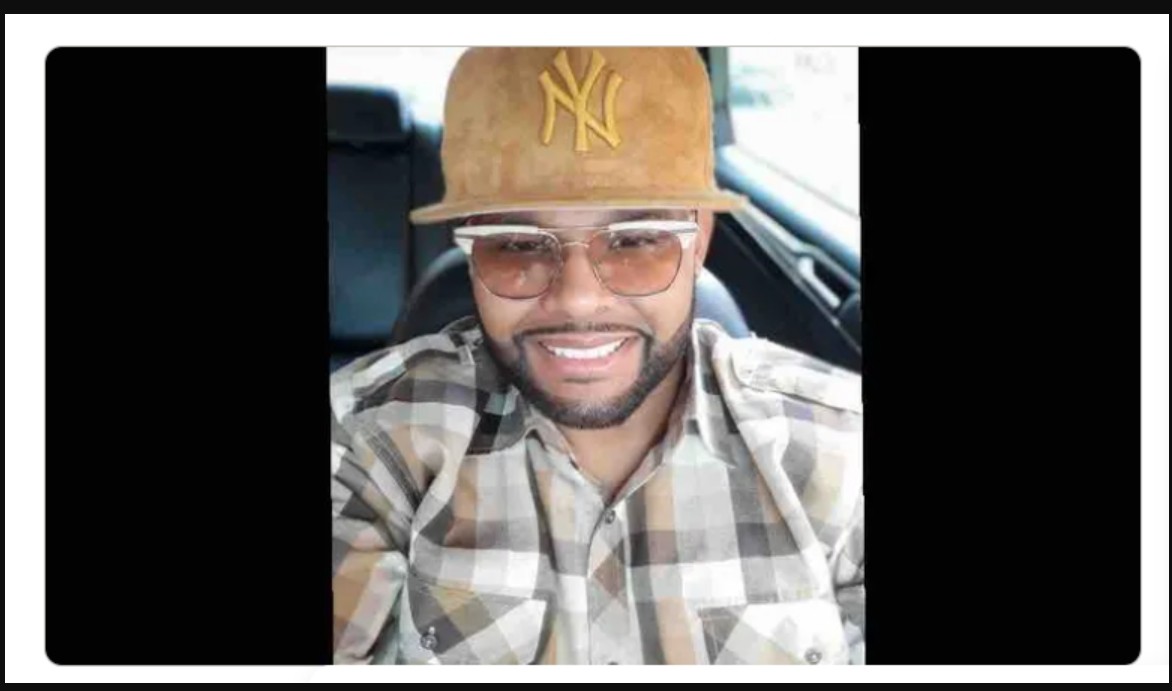Full Text: Supreme Court Ruling Expanding Gun Rights
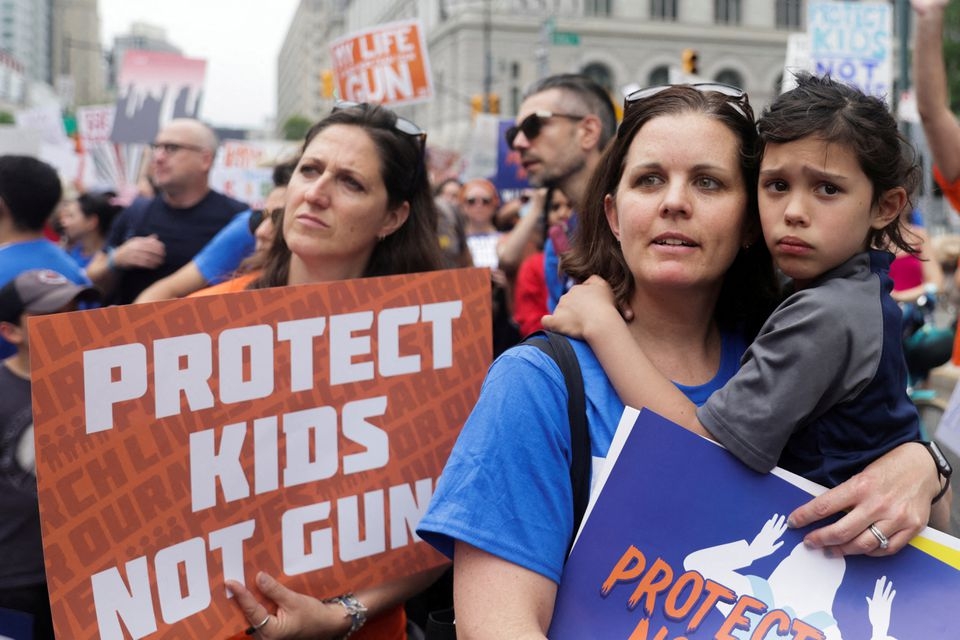 |
| Supreme Court ruling expanding gun rights. Photo: Reuters |
The Supreme Court on Thursday declared for the first time that the U.S. Constitution protects an individual's right to carry a handgun in public for self-defense, handing a landmark victory to gun rights advocates in a nation deeply divided over how to address firearms violence.
The 6-3 ruling, with the conservative justices in the majority and liberal justices in dissent, struck down New York state's limits on carrying concealed handguns outside the home. The court found that the law, enacted in 1913, violated a person's right to "keep and bear arms" under the U.S. Constitution's Second Amendment, according to Reuters.
The ruling, authored by Justice Clarence Thomas, could undermine similar restrictions in other states and imperil other types of state and local firearms restrictions nationwide.
Thomas wrote: "We know of no other constitutional right that an individual may exercise only after demonstrating to government officers some special need."
Gun rights, held dear by many Americans and promised by the country's 18th century founders, are a contentious issue in a nation with high levels of firearms violence including numerous mass shootings. Just in recent weeks, 19 children and two teachers were killed on May 24 at an elementary school in Uvalde, Texas, and 10 people were slain on May 14 at a grocery store in Buffalo, New York.
President Joe Biden, who has called gun violence a national embarrassment, condemned the decision.
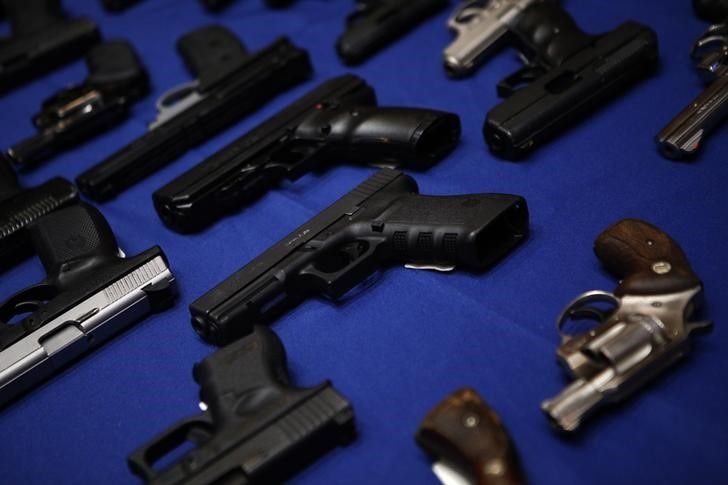 |
| Seized guns are pictured at the police headquarters in New York August 19, 2013. REUTERS/Eric Thayer. Photo: Reuters |
"This ruling contradicts both common sense and the Constitution, and should deeply trouble us all," Biden said. "In the wake of the horrific attacks in Buffalo and Uvalde, as well as the daily acts of gun violence that do not make national headlines, we must do more as a society - not less - to protect our fellow Americans."
Liberal Justice Stephen Breyer wrote in dissent that the court expanded gun rights without coming to grips with the "nature or severity" of firearms violence in a country with more guns per person than any other. Breyer said the ruling leaves states without the ability to address "significant dangers."
The justices overturned a lower court ruling throwing out a challenge to the law by two gun owners and the New York affiliate of the National Rifle Association (NRA), an influential gun rights group closely aligned with Republicans.
Thursday's ruling underscored how the court's conservative majority is sympathetic to an expansive reading of Second Amendment rights.
It represented the court's most important statement on gun rights in more than a decade. The court in 2008 recognized for the first time an individual's right to keep guns at home for self-defense in a District of Columbia case, and in 2010 applied that right to the states.
About 8 in 10 Democratic voters said gun laws should be made more strict, VoteCast showed. Among Republican voters, roughly half said laws should be kept as they are, while the remaining half closely divided between more and less strict.
In a dissent joined by his liberal colleagues, Justice Stephen Breyer focused on the toll from gun violence.
Since the beginning of this year, “there have already been 277 reported mass shootings — an average of more than one per day,” Breyer wrote. He accused his colleagues in the majority of acting “without considering the potentially deadly consequences” of their decision. He said the ruling would “severely” burden states’ efforts to pass laws “that limit, in various ways, who may purchase, carry, or use firearms of different kinds.”
Several other conservative justices who joined Thomas’ majority opinion also wrote separately to add their views, according to AP News.
Justice Samuel Alito criticized Breyer’s dissent, questioning the relevance of his discussion of mass shootings and other gun death statistics. Alito wrote that the court had decided “nothing about who may lawfully possess a firearm or the requirements that must be met to buy a gun” and nothing “about the kinds of weapons that people may possess.”
“Today, unfortunately, many Americans have good reason to fear they will be victimized if they are unable to protect themselves.” The Second Amendment, he said, “guarantees their right to do so.”
Justice Brett Kavanaugh, joined by Chief Justice John Roberts, noted the limits of the decision. States can still require people to get a license to carry a gun, Kavanaugh wrote, and condition that license on “fingerprinting, a background check, a mental health records check, and training in firearms handling and in laws regarding the use of force, among other possible requirements.”
Backers of New York’s law had argued that striking it down would lead to more guns on the streets and higher rates of violent crime. Gun violence, on the rise during the coronavirus pandemic, has spiked anew. Gun purchases have also risen.
In most of the country gun owners have little difficulty legally carrying their weapons in public. But that had been harder to do in New York and the handful of states with similar laws. New York’s law, in place since 1913, says that to carry a concealed handgun in public, a person applying for a license has to show “proper cause,” a specific need to carry the weapon.
The state had issued unrestricted licenses where a person could carry a gun anywhere and restricted licenses allowing a person to carry the weapon but just for specific purposes such as hunting and target shooting or to and from their place of business.
The challenge to the New York law was brought by the New York State Rifle & Pistol Association, which describes itself as the nation’s oldest firearms advocacy organization, and two men seeking an unrestricted ability to carry guns outside their homes.
The Supreme Court last issued a major gun decision in 2010. In that decision and a ruling from 2008 the justices established a nationwide right to keep a gun at home for self-defense. The question for the court this time was just about carrying a gun outside the home. Thomas, who turned 74 on Thursday, wrote in his opinion that: “Nothing in the Second Amendment’s text draws a home/public distinction with respect to the right to keep and bear arms.”
Click here to read and download the court's decision: Full Text Of Supreme Court Ruling Expanding Gun Rights
'ABSOLUTELY SHOCKING'New York Governor Kathy Hochul, a Democrat, called the ruling "absolutely shocking." New York City Mayor Eric Adams said officials will review licensing policies and how sensitive locations are defined, adding: "we cannot allow New York to become the Wild West." Under the New York law, applicants seeking an unrestricted concealed carry permits needed to convince a state licensing officer of an actual, rather than speculative, need for self-defense. Most applicants received unrestricted licenses. These were granted more freely in rural areas than densely populated New York City. Officials could also grant licenses restricted to activities such as hunting or target practice. The ruling clarified how courts must now assess whether regulations are valid under the Second Amendment, requiring them to be comparable with restrictions traditionally adopted throughout U.S. history. New York's concealed firearm regime failed that test, Thomas wrote. Gun control advocates feared the ruling could undermine gun measures such as "red flag" laws targeting the firearms of people deemed dangerous by the courts, expanded criminal background checks for gun buyers or restrictions on selling untraceable "ghost" guns assembled from components purchased online. They also feared it could jeopardize gun bans in sensitive places such as airports, hospitals and schools. The ruling will directly affect at least six states - New York, California, Hawaii, Maryland, Massachusetts and New Jersey as well as the District of Columbia - that let officials decide whether people can carry concealed handguns in public even if they pass criteria such as criminal background checks. Connecticut, Delaware and Rhode Island also give officials some discretion. The ruling lets states prohibit guns in "sensitive places," likely beyond locations such as courthouses and legislative buildings those that historically met that definition. Thomas wrote that courts "can use analogies to those historical regulations" of sensitive places. But Breyer asked: "So where does that leave the many locations in a modern city with no obvious 18th- or 19th-century analogue? What about subways, nightclubs, movie theaters and sports stadiums? The court does not say." Tom King, president of the New York State Rifle and Pistol Association, the NRA's state affiliate, told Reuters he would like to see as few places deemed "sensitive" as possible, and would file legal challenges if, for example, officials tried to ban weapons on subways or buses. Conservative Justice Brett Kavanaugh in a concurring opinion said states can still impose requirements on people seeking licenses to carry firearms including fingerprinting, background checks, mental health checks and firearms training classes. In another concurring opinion, conservative Justice Samuel Alito disputed that gun regulations like New York's would deter mass shootings such as the Buffalo massacre. "The New York law at issue in this case obviously did not stop that perpetrator," Alito wrote. |
| Gun violence is a national public health epidemic that exacts a substantial toll on the U.S. society. Gun violence includes homicide, violent crime, attempted suicide, suicide, and unintentional death and injury. According to the Centers for Disease Control and Prevention (CDC), more than 38,000 deaths from firearms (including suicides) occurred in the United States in 2016, and nearly 85,000 injuries from firearms occurred in 2015. That’s an average of 105 deaths and more than 230 injuries from firearms each day. In addition to the thousands killed or injured, myriad families must also cope with the consequences of this violence. In terms of the financial toll, although the estimates vary, it’s generally held that gun violence expenses—medical charges, loss of income, daily care/support, and criminal justice expenditures—cost the U.S. economy approximately $229 billion annually. Gun violence should be considered a public health issue, not a political one—an epidemic that needs to be addressed with research and evidence-based strategies that can reduce morbidity and mortality. Gun violence affects people of all ages and races. Family physicians care for victims of gun violence and their families every day. These physicians, who witness the substantial impact firearm-related violence has on the health of their patients, families, and communities, have the power to help improve the safety and wellbeing of those groups. Gun Violence: A Public Health EpidemicGun violence is a public health epidemic and should be treated accordingly. While mass shootings are horrific and capture the attention of the media, they are only part of the gun-violence picture—more than half of all suicides are firearm-related,10 and firearms are used in more than 50% of female homicides. Similarly to females, firearm-related deaths are a particular threat to children in the U.S. They are the third-leading cause of death in children overall, and the U.S. accounts for more than 90% of all firearm deaths among children in developed, high-income nations. Public health professionals are trained to create and test interventions to reduce death and injury. However, limited federal funding is available to research this leading cause of death. Introduced in 1996, the Dickey Amendment prohibits federal funding allocated to the Centers for Disease Control and Prevention (CDC) be used to advocate for or promote gun control, which essentially ended all CDC funding research on gun violence or gun control measures. Appropriate research funding is the first step to understand gun violence and is essential to develop programs to prevent premature death from guns. An inconsistent collection of epidemiologic data is another impediment to this research. Currently, not all U.S. states report surveillance data to the National Violent Death Reporting System.14International Classification of Disease (ICD) codes are often used to collect data on a national scale, but do not provide the same level of detail. Creating a comprehensive data collection surveillance system will provide public health researchers with comprehensive and consistent information to study gun violence. An example of such a system in place with data to study a public health issue is research on motor vehicle accidents. The number of deaths caused by motor vehicle accidents is comparable to gun violence, but motor vehicle deaths have declined significantly over the past decade despite more motorists on the road. Extensive research has improved motor vehicle safety with multiple evidence-based interventions contributing to decreased mortality. Implementation of vehicle safety features, stricter enforcement of traffic laws, and public awareness campaigns effectively addressed high morbidity and mortality associated with motor vehicles. The National Highway Traffic Safety Administration (NHTSA) operates with a budget of more than $1 billion annually, and is committed to the continued improvement of the safety of motor vehicles and motorists. Research and development for the agency alone had a budget of nearly $146 million in 2017. Similarly, almost all other leading causes of death, whether accident or disease, receive substantially more funding for research than gun violence. One study found that, “in relation to mortality, gun violence research was the least-researched cause of death and the second-least funded cause of death after falls.” When a similar approach to research on motor vehicle accidents is suggested for gun violence, it is often considered political, instead of an evidence-based, data-driven approach to prevent morbidity and mortality. As whole-person health care providers, family physicians see the effect of gun violence on their patients and in their communities. Using a public health perspective, family physicians can incorporate evidence-based strategies to treat their patients and guide their communities on this important issue. With that in mind, the AAFP:
|
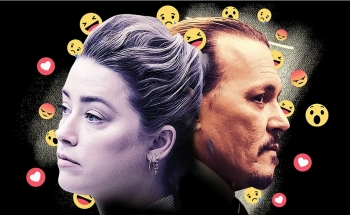 Full Text of the Trial's Verdict, Statements from Depp and Heard Full Text of the Trial's Verdict, Statements from Depp and Heard The seven-person civil jury (five men, two women) has found in favour of Johnny Depp in the high-profile court case against Amber Heard. |
 Full Text President Putin Comments on Bucha Massacre for the First Time Full Text President Putin Comments on Bucha Massacre for the First Time Russian President Vladimir Putin said on April 12 that images and video of dead bodies strewn across Bucha town (outsite Kyiv, Ukraine) were FAKE. |
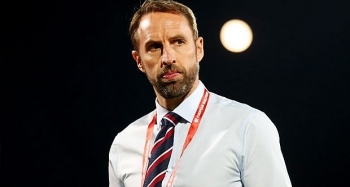 The Full Text of Gareth Southgate’s Extraordinary Letter The Full Text of Gareth Southgate’s Extraordinary Letter Gareth Southgate writes open letter and reveals why his England heroes won’t just be ‘sticking to football’ at Euro 2020 Final agiast Italy. |
 UFO Report in Full: Can't Explain 143 of 144 Mysterious Flying Objects UFO Report in Full: Can't Explain 143 of 144 Mysterious Flying Objects Read Full UFO Report: The unclassified report said researchers could explain only one of 144 UFO sightings by US government personnel and sources between ... |


